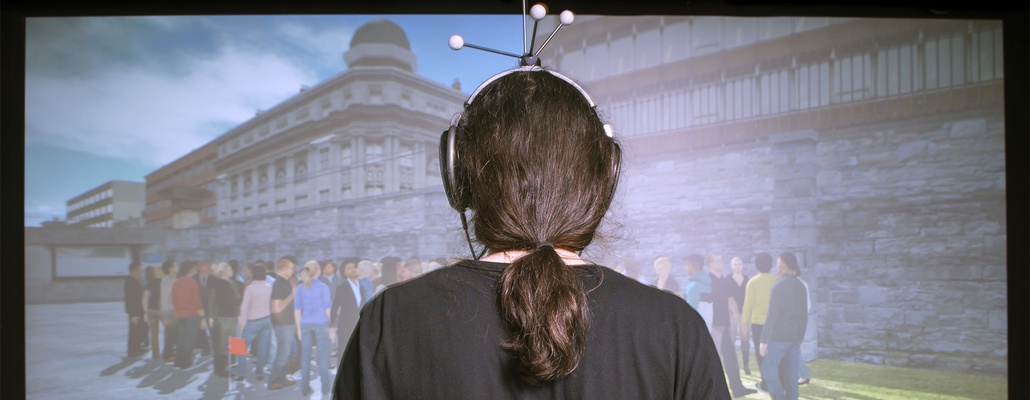3-6pm | Conferences
3:00pm - Franck Varenne, lecturer, université de Rouen
Spatial Simulation as an Integrative and Multiprocess Construction
The history of computer simulation practices of living systems shows that since the 1990s, alongside the traditional uses of numerical simulation, there has been a strong development of integrative and spatial simulation practices, while integrating them in complex and multi-processed temporal dynamics. In particular, the processes of growth and morphogenesis have been increasingly represented in a quasi-iconic manner by these multi-model simulations. In this talk, Franck Varenne will show that iconicity is not so much sought after for itself. Rather, such a representation shown in 3D (or 4D, ie 3D + time) presents the fundamental interest of allowing the integration at runtime, that is to say during the calculated growth, of a large quantity of formally and axiomatically heterogeneous processes: mechanical, chemical, physiological and biological.
3:30pm - Bruno Lévy, Director of research, Inria, Head of the team-project ALICE
Form, Function, and Aesthetics
In three decades, the processing capacity of computers has developed hyperbolically. Combined with recent advances in physics, mathematics, additive manufacturing (3D printing) and 3D acquisition (3D scanners). These advances make it possible to "close the loop" between the virtual and the real, and above all to integrate our understanding of physics at the very heart of the process of conception, or even of artistic creation. It becomes possible to design shapes whose physical properties are optimized for a particular use. These forms which emerge from the solution of a mathematical problem present quite an astonishing aesthetic. The aesthetics concealed in the equations, accessible only by mathematicians, is revealed in the eyes of all, at the junction between physics, computer science and mathematics.
4:00pm - Gaël Seydoux, Head of research and innovation, Technicolor
The Connection Between Emotion and Immersion in Immersive Experiences
Today the media concentrates it’s efforts on plunging the user into ever more realistic sensory experiences. The experience is called engaging when all the senses of the user are solicited in order to create an emotional momentum that guarantees the users attention. From the representation of the human being in 3D (avatar) and its use in immersive experiences (3C rule: character, control, camera), an emotional connection between the universe of experience and the user is formed. From video games to virtual reality worlds, the notions of "embodiment", control and commitment and how technologies (light field, parallax and immersive format, virtual reality, multi user and collaboration) experience makes this new media plausible will be tackled.
4:30pm - Frédéric Kaplan, Director of the Digital Humanities laboratory at the École polytechnique fédérale de Lausanne
Venice Time Machine
The Time Machine project, competing in the race for the new Flagships FETs, offers a unique archiving and computing infrastructure to structure, analyze and model past data, realign it to the present and allow it to project itself into the future. It is supported by 70 institutions from 20 countries and 14 international programs.
5:00pm - Olivier Warusfel, Markus Noisternig, researchers at IRCAM-STMS
Printing and Composing sound chambers- Natural spaces, chimeric spaces
Music and Architecture maintain a set of metaphorical as well as temporal and spatial interactions. Sound spatialization means not only extending the organological body with new sounds, but also modulating the acoustics of the concert hall. It means even creating chimerical spaces. It makes it possible to capture, compose or reproduce the sound fingerprints of spaces, engraved in spatialized impulse responses. A virtual sound chamber is formed in the concert hall, allowing an artistic game with the ambiguity of these competing acoustic spaces. After a brief survey of available technologies, we will identify different possible aspects of sound spatialization. Based on the examples of creation of the exhibition "Imprimer le monde", we will identify approaches that aim to reveal and "translate" a pre-existing architectural space while others aim to "re-produce" the sound impression of certain spaces.
5:30pm - Thierry Coduys, Head of the association/project IanniX / Gaël Martinet, co-founder of the company Flux::
Spatialization, Towards 3D Writing
The music of the Occident was deeply marked by the practice of the writing, the score became a genuine instrument of research for the composer, trying indefatigably to push back the limitations and the representations of them. Are we very close to these limits? And how would we react in front of a virtual white sheet in three dimensions, could we increase our capacities of writing? If we think of a musical field where the three-dimensional score is essential, that will be the space writing: composing space as well as the other components of the musical writing. Trajectories representations, modeling a network of virtual loudspeakers, it is what we will present today. Based on results from IRCAM’s Acoustic and Cognitive Spaces team’s research, SPAT Revolution developed by the company Flux::, is a software dedicated to the treatment of spatialization in real-time of aural signals in the contexts of musical creation, post-production, and in concert situations. It will be presented in interaction with the IanniX software, inspired by Iannis Xenakis’work, based on the writing of a spatial score and the representation of the temporal structures in a three-dimensional graphical space. For the occasion, the presentation of a short electroacoustic piece “fissures” will let us test the interactions between the 3D spatial score (IanniX) and the 3D sound from the audio engine (SPAT Revolution). “One can say that in the future the music will become space. I believe that the movement of the sounds in space will be as important as the melody, the harmony, the rate/rhythm, dynamics, the stamp”. Karlheinz Stockhausen
Facilitator: Hugues Vignet, Director of the Research and Development Department
Free entry. Limited seats available
At IRCAM we can...
Compose a virtual sound world, imagine new virtual instruments that go against the laws of physics, walk through simulated 3D spaces.




